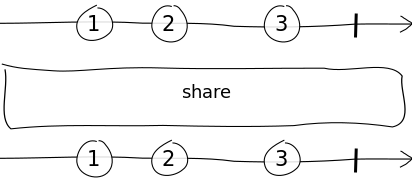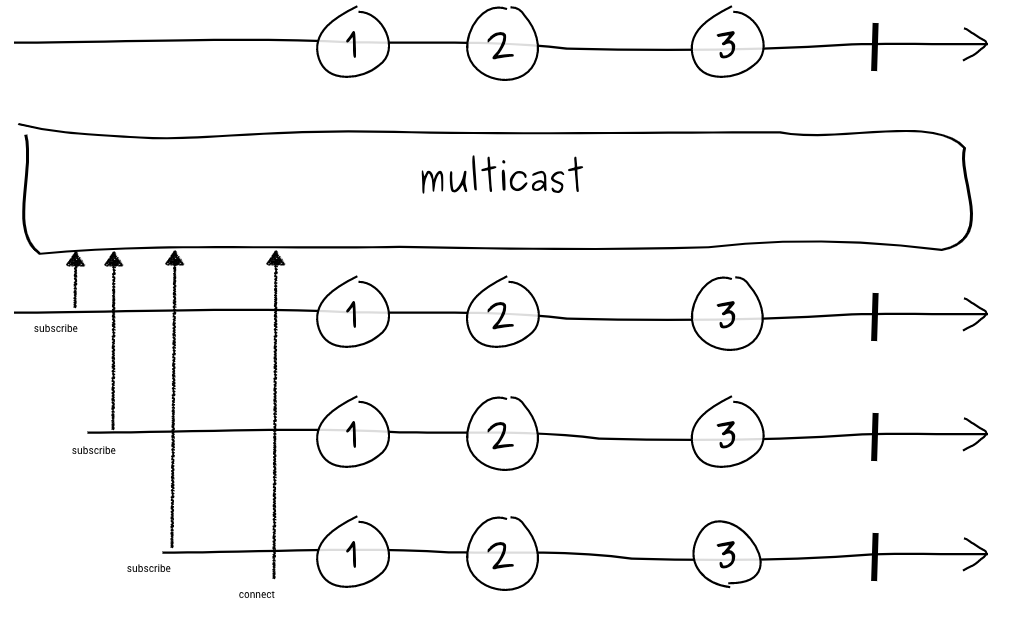Save resources
iOS Combine Estimated reading time: 5 minutesResource sharing is a process when we use something wisely. And nowadays, this point is very hot - a lot of contributors would like to have something.
If we think about resources from a developer’s point of view, we can highlight few hot points also - server resource, or BLE device resource, or even CPU computation result. To make things better, we should save as much as possible. Our world becomes smaller and smaller every second, and resource-saving questions become more and more “popular”.
Think about Swift language and Combine framework - how often we can do the same things again and again. To minimize such behavior, Combine provides for us few possible solutions:
But, Rx world also knows an additional one:
Why do we need a separate function to share the output? Think about publishers - they are struct. So within every subscription, u will get a copy, and so, the operation will be repeated. Sometimes (in most cases) it’s ok, but, in some cases, we don’t want to get this behavior.
Imagine a situation when u would like to get the same information from a server within few publishers - u will repeat the request few times. This is not something u want to get. U want to save u’r resources, to bring a better UX.
Share
share - “shares elements received from its upstream to multiple subscribers”.
This is useful when few subscribers ask a publisher to provide the same information in relatively close time.

Example:
var tokens: Set<AnyCancellable> = []
let dataPublisher =
[1, 2, 3, 4]
.publisher
.delay(for: 1, scheduler: DispatchQueue.main)
.map { _ -> String in
let charCode = Int.random(in: 9_000...10_000)
return String(Character(UnicodeScalar(charCode)!))
}
dataPublisher
.sink { (value) in
print("Pub1 : \(value)")
}
.store(in: &tokens)
dataPublisher
.sink { (value) in
print("Pub2 : \(value)")
}
.store(in: &tokens)Output:
Pub1 : ⏚
Pub1 : ▿
Pub1 :
Pub1 : ☭
Pub2 : ⒣
Pub2 :
Pub2 : ╞
Pub2 : ⛯As u can see, we perform the same operation twice and the result is different. Now, let’s add share to a publisher.
Output:
Pub1 : ⑩
Pub2 : ⑩
Pub1 : ⎞
Pub2 : ⎞
Pub1 : ⎄
Pub2 : ⎄
Pub1 : ╍
Pub2 : ╍As u can see - now, we share the same result for all publishers.
Another sample that also can demonstrate how share works - sample with Timer:
let publisher = Timer.publish(every: 1, on: .main, in: .default)
.autoconnect()
.scan(0, { (x, y) -> Int in x + 1 })
publisher
.sink {
print("1 - ", $0)
}
.store(in: &tokens)
DispatchQueue.global().asyncAfter(deadline: .now() + 4) {
publisher
.sink {
print("2 - ", $0)
}
.store(in: &tokens)
}This great idea of explanation I grab from SO
matts post
The output will be something like this:
1 - 1
1 - 2
1 - 3
1 - 4
2 - 1
1 - 5
2 - 2
1 - 6
2 - 3
1 - 7But if u add share to a publisher:
1 - 1
1 - 2
1 - 3
1 - 4
2 - 5
1 - 5
2 - 6
1 - 6
2 - 7
1 - 7Using
sharemay also trigger some unexpected result, for example this post.
The weak side of this publisher - there is no possibility to store the result and share it with a new subscriber after an operation is done. But for this purpose, there is another 3rd party publisher - share(replay:).
Multicast
multicast - allow to share responsibility for all the subscriber as soon as they are connected. Because the multicast publisher is a ConnectablePublisher, events will be sent only after a call to ConnectablePublisher.connect().

This publisher accepts one parameter: either a Subject or a function that produces a Subject.
Subjectan object that can emit a value on request. It’s a class, so it can be shared. read more.
If we check the behavior of share and multicast publishers, we can tell that Share object is a Multicast object. share is just a convenient wrapper for multicast.
We can use the same example as for a share publisher, with little modification:
let pass = PassthroughSubject<String, Never>()
let dataPublisher =
[1, 2, 3, 4]
.publisher
.map { _ -> String in
let charCode = Int.random(in: 9_000...10_000)
return String(Character(UnicodeScalar(charCode)!))
}
.multicast(subject: pass)
dataPublisher
.sink { (value) in
print("Pub1 : \(value)")
}
.store(in: &tokens)
dataPublisher
.sink { (value) in
print("Pub2 : \(value)")
}
.store(in: &tokens)
dataPublisher.connect()Output:
Pub2 : ╂
Pub1 : ╂
Pub2 : ☕
Pub1 : ☕
Pub2 : ♁
Pub1 : ♁
Pub2 : ⒕
Pub1 : ⒕As u can see - as soon as we call connect, we start to receive values. Multicast has a Subject inside, and when events are received from upstream, this subject just resents them downstream.
ShareReplay
Apple does not include this into Combine framework, instead, this additional publisher described in many sources (RW), CombineExt, etc).
The main purpose of this publisher - is “to create a publisher instance with reference semantics which replays a pre-defined amount of value events to further subscribers”. (source). In two words - it’s like share, but with buffer.

Example:
let dataPublisher =
[1, 2, 3, 4]
.publisher
.delay(for: 1, scheduler: DispatchQueue.main)
.map { _ -> String in
let charCode = Int.random(in: 9_000...10_000)
return String(Character(UnicodeScalar(charCode)!))
}
.shareReplay()
dataPublisher
.sink { (value) in
print("Pub1 : \(value)")
}
.store(in: &tokens)
dataPublisher
.delay(for: 1, scheduler: DispatchQueue.main)
.sink { (value) in
print("Pub2 : \(value)")
}
.store(in: &tokens)Output:
Pub1 : ⚛
Pub1 : ⓴
Pub1 : ⓵
Pub1 : ⛆
Pub2 : ⚛
Pub2 : ⓴
Pub2 : ⓵
Pub2 : ⛆Resources
Share on: